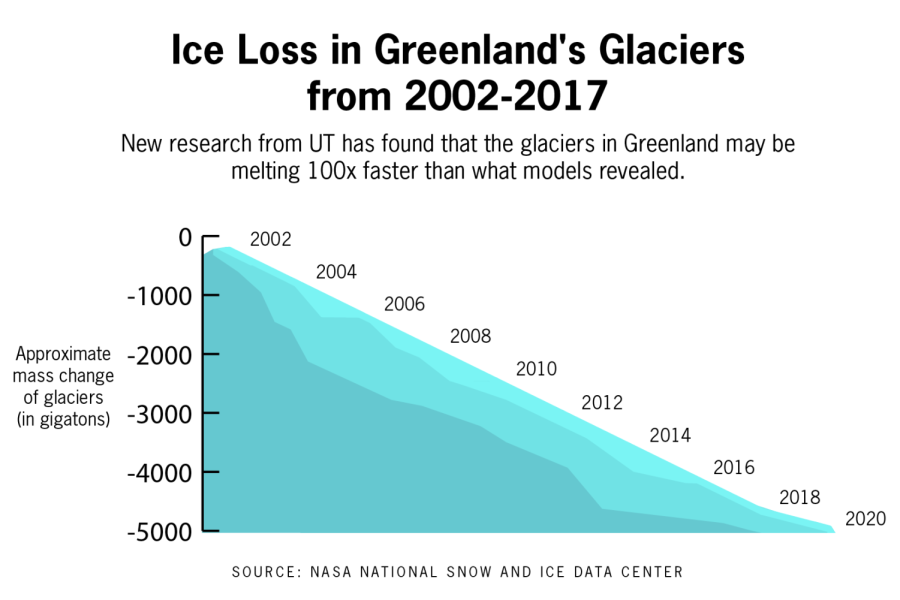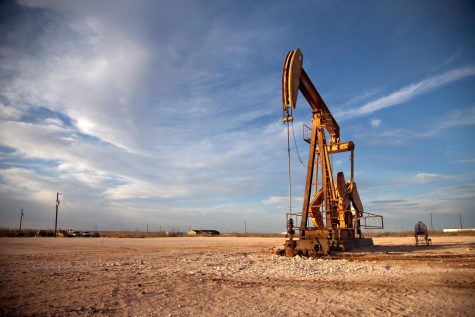New UT computer models reveal Greenland glaciers might be melting faster than anticipated
February 1, 2023
New computer models from UT researchers revealed Greenland’s vertical glacier fronts might be melting at faster rates than previously estimated.
A vertical glacier front is a large cliff-like structure that meets the ocean at a sharp angle, in contrast to horizontal glacier fronts which lay in flat ice sheets on top of the water.
The computer models, designed by the Oden Institute for Computational Engineering and Sciences, calculate how fast the glaciers are melting at the point where the ice meets the water. The new models are specifically designed for the unique vertical glacier fronts in Greenland and were created based on previous data that the LeConte glacier front in Alaska might be melting 100 times faster than demonstrated, according to a University press release.
“(Melt rates have) huge uncertainties,” lead researcher Kirstin Schulz said. “There’s not enough good data to even say if you’re right or wrong. With our new models, we are incrementally trying to make aspects of the models better. … One should never underestimate the contribution that computer work contributes to scientific understanding.”
The jagged edges and falling ice on Greenland’s glacier cliffs makes collecting data from the front dangerous for oceanographers, Schulz said. Because of this, previous models that used data from Antarctica’s horizontal glaciers did not account for the different physical structure of the Greenland glaciers.
“A lot of people don’t realize that we don’t have a lot of time left to fix this very urgent issue,” said Mateo Rives, a member of the Austin Climate Coalition. “Seeing the massive numbers really shows you how fast this is happening.”
Helen Pillar, associate researcher at the Oden Institute, said the rates that glaciers melt fall into one of two categories: atmospheric melting due to a change in temperature or melting from the ocean water. The new model falls into the latter category and is specific to the melting rate where the glacier ice meets the ocean water.
“The problem in Greenland is that several kilometers before the glacier front, the (research) ships encounter huge icebergs,” Schulz said. “We can’t even get close enough to deploy these remotely operated vehicles. There are efforts, but it remains super tricky.”
As the Greenland ice sheet continues to melt, it makes a huge contribution to the global sea level and ocean circulation patterns which, in turn, impacts ecosystems and atmospheric patterns, Pillar said.
“There’s (an) important exchange point between this huge global ocean and this big ice sheet which is storing all this freshwater,” Pillar said. “Understanding how these two components communicate is really essential.”
While this research refers to a small part of the climate process, Pillar said she hopes to see more collaboration throughout the climate community.
“When I entered the field, I felt like science was more of a competitive environment,” Pillar said. “Now, the problem (of climate change) is so huge that it’s important for us all to try to collaborate to find solutions as quick as possible as the whole world is facing changes that are going to really impact the quality of our lives.”











